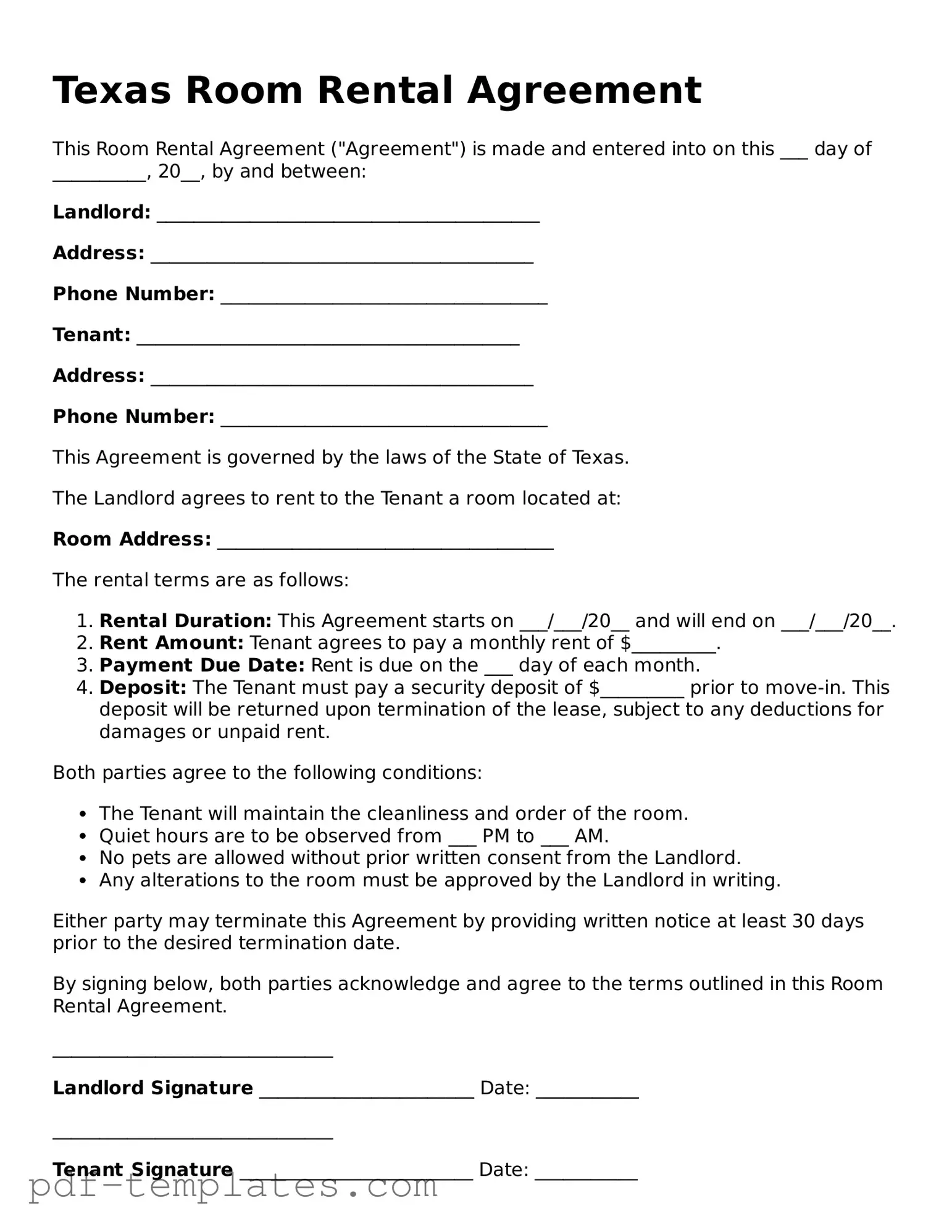The Texas Room Rental Agreement is similar to a Lease Agreement, which is commonly used for longer-term rentals. A Lease Agreement typically outlines the terms for renting an entire property, such as an apartment or house, for a specified duration, often a year. Like the Room Rental Agreement, it includes details about the rental amount, security deposits, and the responsibilities of both the landlord and tenant. However, the Lease Agreement usually covers more extensive terms due to the longer commitment involved.
Another document that shares similarities is the Sublease Agreement. This form is used when a tenant wishes to rent out their leased property to another person. Much like the Room Rental Agreement, it details the rental terms, including the duration and payment amount. However, a Sublease Agreement requires the original tenant to maintain responsibility for the lease with the landlord, which adds an extra layer of complexity compared to a standard room rental.
The Rental Application is also related, serving as a preliminary document that potential tenants fill out before entering into any rental agreement. This application collects important information about the applicant, such as employment history and references. While the Room Rental Agreement finalizes the rental terms, the Rental Application helps landlords screen potential tenants to ensure they are a good fit for the property.
A Roommate Agreement is another similar document. This agreement is designed for individuals who are sharing a rental space, outlining each roommate's responsibilities, such as payment of rent and utilities. While the Room Rental Agreement is typically between a landlord and a tenant, a Roommate Agreement focuses on the relationship between individuals living together, ensuring that everyone is on the same page regarding shared living arrangements.
For individuals in California, understanding the necessary documentation is crucial, particularly the California Identification Card form which can be explored further at formcalifornia.com/. Identifying the right forms and related agreements helps ensure compliance with regulations and streamlines the application process for various types of rentals, promoting clarity and security for both landlords and tenants.
The Move-In Checklist is closely related as well. This document is often used in conjunction with the Room Rental Agreement to document the condition of the rental space before the tenant moves in. It helps protect both the landlord and tenant by noting any existing damages or issues. This checklist can be a valuable tool in avoiding disputes over security deposits when the tenant moves out.
Lastly, the Notice to Quit is another important document that can be related to the Room Rental Agreement. This notice is issued by a landlord to a tenant who has violated the terms of their rental agreement, such as failing to pay rent. It serves as a formal request for the tenant to vacate the property. While the Room Rental Agreement outlines the terms of the rental, the Notice to Quit addresses issues that may arise during the tenancy, ensuring that both parties understand their rights and obligations.
